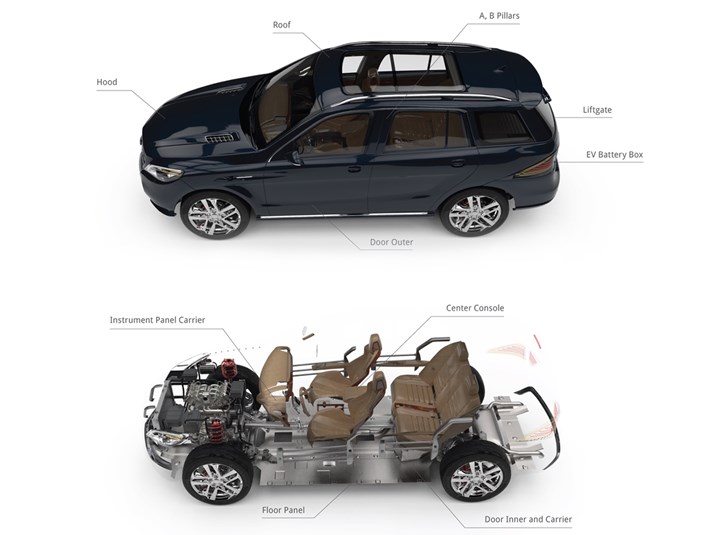WEAV3D, GAA partner to expand structural composite opportunities in automotive sector
Tunable, composite lattice structures produced via patented automated weaving process able to support automotive volumes of hundreds of thousands of units per year.

Structural composite opportunities for automotive using WEAV3D’s patent-pending Rebar for Plastics concept. Photo Credit: WEAV3D
WEAV3D Inc. (Norcross, Ga., U.S.) announced on March 31 that it has partnered with Global Alliance Automotive AG (GAA, Zurich, Switzerland) to promote the use of WEAV3D’s lightweight, locally tunable structural composites in the automotive industry. These materials are said to be a cost-effective alternative to traditional composites, steel and aluminum, and can increase vehicle fuel economy and electric vehicle (EV) range.
WEAV3D’s patent-pending composite forming process, which the company says can support automotive volumes of hundreds of thousands of units per year, produces a woven composite lattice structure from unidirectional (UD) fiber-reinforced composite tapes. These composite lattices are then overmolded into finished structural components using traditional molding processes — a design concept known as Rebar For Plastics (see “Automated weaving system targets high-performance, high-volume applications”).
“Our locally tunable reinforcement materials enable automotive manufacturers to lightweight automotive interior and exterior components without reinventing production lines,” says Chris Oberste, Ph.D., WEAV3D founder and CEO. “European GHG emission requirements are world-leading, so European automakers are ahead of the rest of the world when it comes to implementing lightweight materials. This partnership allows us to leverage GAA’s close relationship with European OEMs to drive the adoption of our innovative solution.”
“WEAV3D’s process is a game-changer for the automotive industry,” adds Ralf Mueller, GAA managing director. “Not only does the WEAV3D lattice increase the strength and stiffness of automotive components, but it also promises significant cost reductions compared to existing composite designs and production methods.”
Related Content
-
Jeep all-composite roof receivers achieve steel performance at low mass
Ultrashort carbon fiber/PPA replaces steel on rooftop brackets to hold Jeep soft tops, hardtops.
-
The next evolution in AFP
Automated fiber placement develops into more compact, flexible, modular and digitized systems with multi-material and process capabilities.
-
Pultrusion: The basics
A primer describing what pultrusion is, its advantages and disadvantages, and typical applications.













